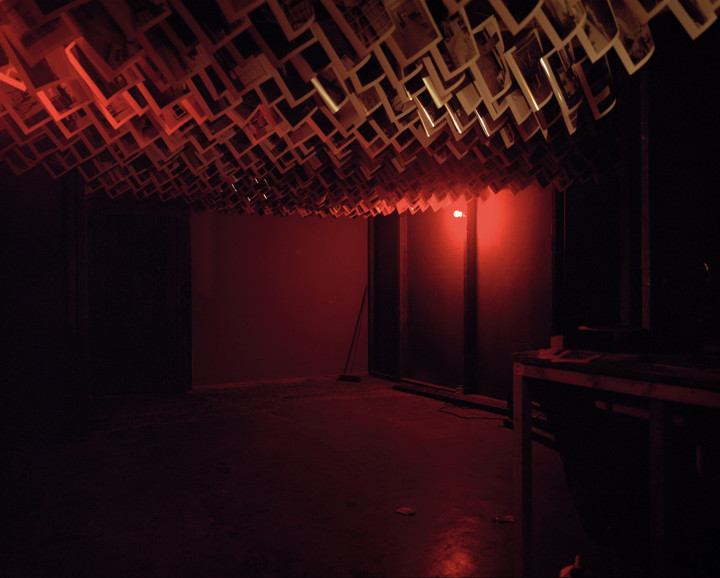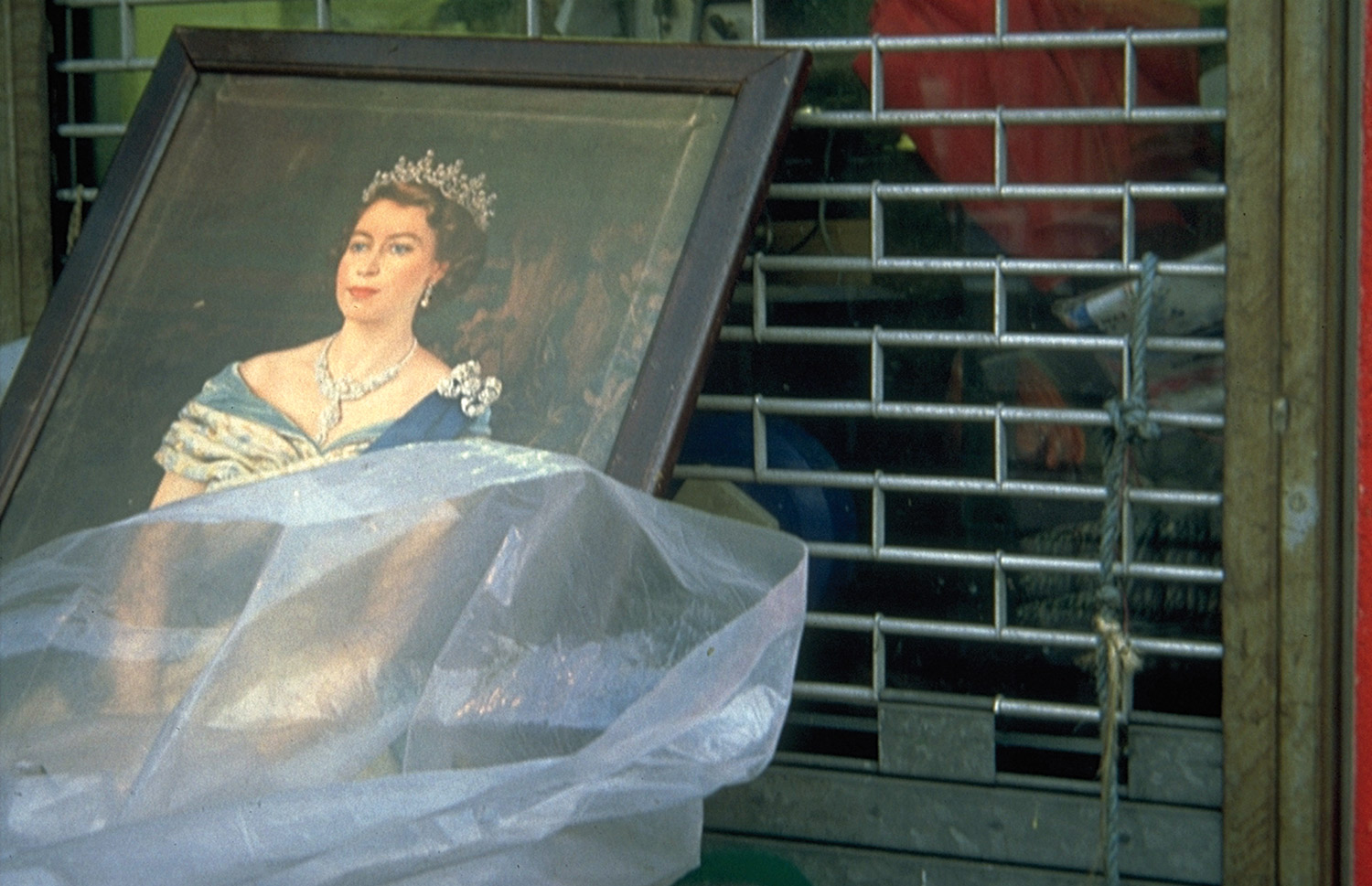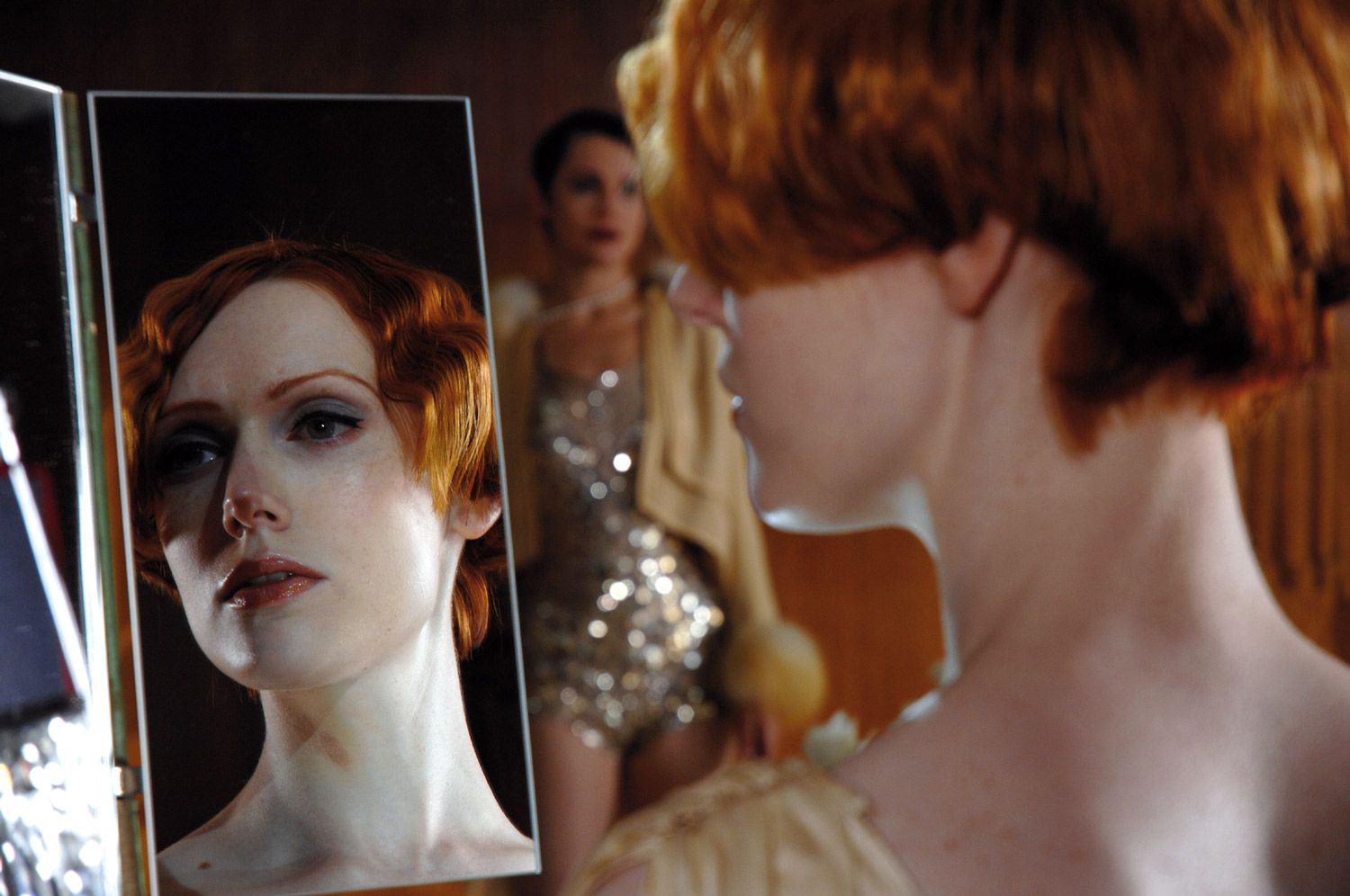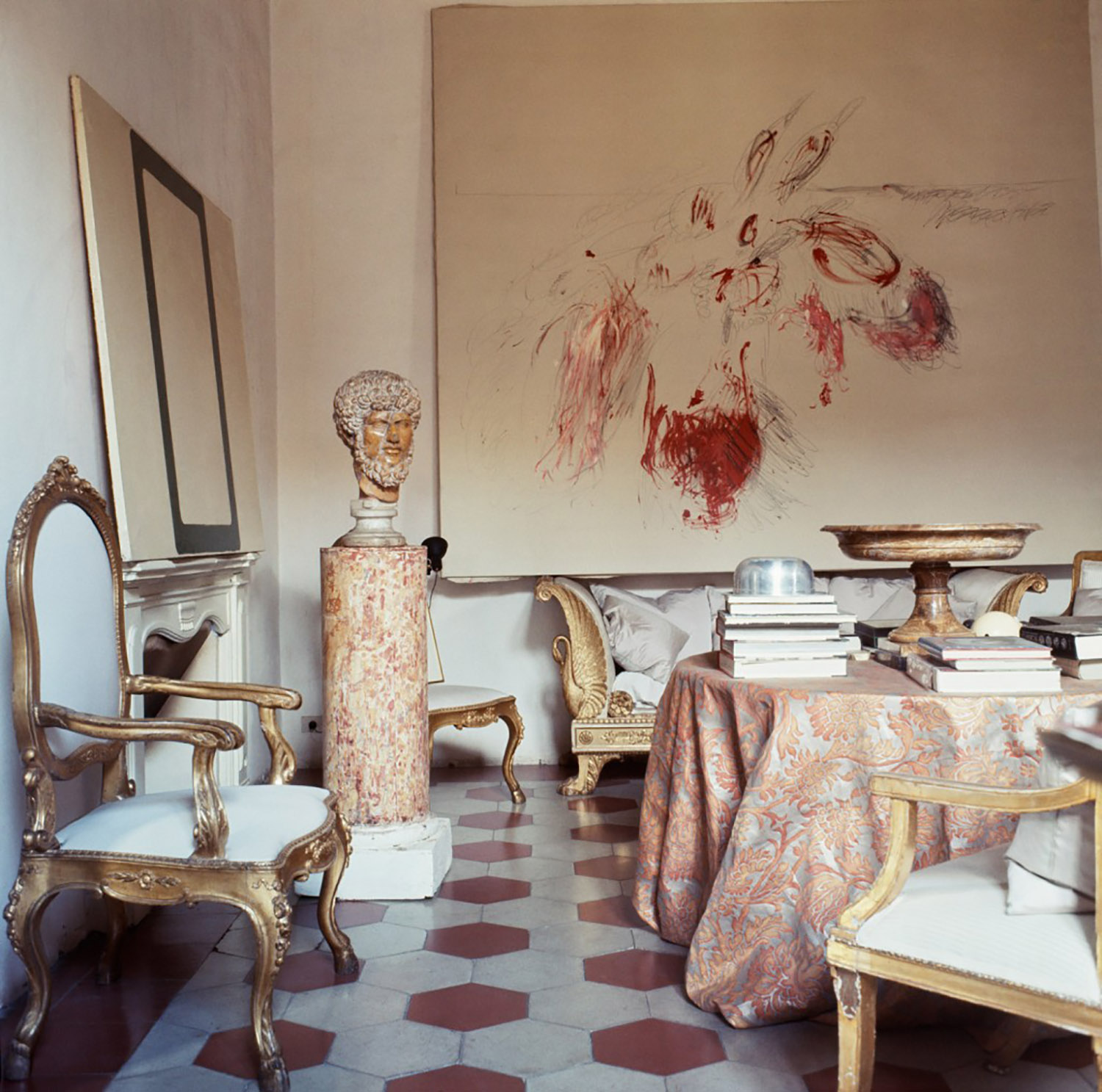
Michele Robecchi: Your installations are very intense but never too busy. They seem to preserve a minimal quality.
Mike Nelson: I’ve always had a slight fear of piles of junk that function purely as decorative ephemera but only act as a signifier of a certain type of installation. It was a particular concern with an early work; Trading Station Alpha CMa (1996) at Matt’s Gallery. It was built to look like a storeroom, with big shelving structures filled with the varied detritus from the streets of the East End that proliferated in the streets and waste ground before the property boom. At the center of the structure was a hut built into the shelving itself. Here was the lair of a creature; half dog half man, seemingly the dumbest idea for a gallery which was originally named after a dog. However at this point the formal stacks of junk were animated by this fictional character, and you as the viewer were asked to re-read the work from the inside out, back to front as it were. A book, Hard to Be A God, the dog’s reading matter, was a pivotal clue to the two references in the show and its thematic drive: the moment when Dennis Hopper’s crazed paparazzi photographer observes the reversal of the word “god” to “dog” connects the authors of the book; the Strugatsky brothers to the film Apocalypse Now.
So, in a sense the whole work was about that space between a film and its literary reference — Apocalypse Now and Heart of Darkness, Stalker and Roadside Picnic. You had this American-Soviet comparison running through it, both versions of the same tale. When I was working on that I was very aware that it could be criticized, in the sense of “Oh my God, look at this. There’s so much effort, but what does it mean?”
MR: Are you concerned when you work that you might slip into this theatrical trap?
MN: I think it’s a constant worry that you’ll make this amount of effort to have something that just becomes spectacle, as opposed to something which moves somebody or encourages somebody to empathize with what you’re trying to lure them into, or coax them towards. But you can’t really lay a hard and fast rule. You can’t control that. You can try, but that becomes problematic in itself. Say a piece like A Psychic Vacuum (2007). I never saw it after I’d finished it, except while taking photographs. I would never go into it when there were people in it. There is a worry in the art world now with its increased visibility, that such spectacles could become a tool of the politicians or multi nationals or at any rate removed from the intent that they were made for.

MR: Your work presents tight relationships with the surrounding architecture and its history. When it comes to a group show, like the recent “Psycho Building” at the Hayward, where you rebuilt To the Memory of H.P. Lovecraft (1999), do you think this effect becomes diluted?
MN: The work at the Hayward gallery is different, because I built it before everything else was installed. I think that work would be far better if the rest of the museum was empty and there was just one room that had been ripped apart. But I don’t think the Hayward would be that amenable to that! The architecture there is very brutal and that is why I chose to re-work it for there, I was pleased the way it turned out. People can’t really tell all that I’ve done because the big central archway wall in the center is all fake, we built it as a double-skinned wall to emulate the rest of the building with a plaster wall behind with hardboard skirtings and grills put in so it appears that it has always been there.
Also in relation to the question, there was another work I made for my MA show at Chelsea College of Art in 1993, which I rebuilt for a show at GAMeC in Bergamo a couple of years ago. It was titled A staging of the reconstruction of the southern palace of Babylon which in effect was what it was. In terms of context, time or history is a major factor in the reading of a piece, and in relation to this, recent world events have been kind to that work, if not to the rest of the world or the Iraqi people.
MR: It’s interesting how something conceived in the early ’90s turned out to be so time-sensitive again 12 years later.
MN: Yeah, but not in the same way though.
The first Gulf War was perceived in a far different way to the second one. Predominantly people were supportive of it, it was seen as a success. The work now is shifting away from such didactic political territory. It’s becoming more self-conscious of its own theatricality than earlier work. I think this has arisen since returning to work in galleries and museums after a period of predominantly building works into found, exiting spaces: a deserted reptile house in the Kings Cross region in the Sydney Biennial of 2002 or the hidden photographic darkroom in an old caravansary for the 2003 Istanbul Biennial, or more recently in the old Essex St. Market for Creative Time in New York (2007).
MR: Does the piece you are currently working on in Copenhagen fall into this latter category?
MN: I think so. I am making it immediately apparent that it’s an artifice. The building will be a theater, so the reference to theatricality is overt. It’s two small theaters in the round, which is very much in relation to what you were talking about — the spectacle. There’s a section within the museum where the architecture is very repetitive. It’s punctuated by two rooms with lift shafts in them. Two rooms exactly the same, connected by one long rectangular one in the middle. The structure I’m building is then flipped onto the other side and mirrored with a big curved 120-foot-long corridor in the middle. In a sense you see the back of a structure, the falsity of what you’re walking into, almost like you’ve come to the back of a show when you shouldn’t have done. Initially you’re feeling kind of pleased with yourself because you spoiled the artist’s trick. This however is a double bluff of sorts as it relaxes you for the main feature which is your passage through the curved corridor back to the same space where everything is reversed. It looks kind of the same but you know it’s not, so there’s an uncanniness, an unease about it. It’s like an investigation of your own recent history, a device to reinvent that sense of deja-vu the first time you ever experienced it as a child, an existential moment of confusion.

MR: Do you think there is an analogy between this sense of mirroring and the one you feel on a personal level when you are rebuilding an old piece?
MN: Obviously that metaphorical mileage can be used in terms of the idea of mirroring. Looking back at something and you can see where you were but you can’t quite acknowledge it as it was.
Years ago I was very moved by personal experience of traveling. I was brought up in the middle of England and I had only ever visited France on an exchange program until I turned 19 and found myself traveling to the East of Turkey, the borders of Iran and I had a life changing experience. I got super ill, lost my passport, lost my money. From that year on and for many years I traveled to the Middle East; to Egypt, Morocco, Syria or Pakistan. I became quite obsessed with the Islamic world and the shift in emphasis of its value structures from the world in which I had been brought up. On a simplistic level it seemed to offer the antithesis of what I was familiar with in the West.
MR: It’s a complicated territory.
MN: Yeah. And to drop in a few prayer mats and a few stickers on a wall in this context seems kind of flat and opportunistic. Originally my relationship to the Middle East was one of a subjective history merging with that of the world, there was an awkwardness in my British identity in relation to it, an exoticism of sorts. However times have changed and there’s much more visual currency to such gestures and it’s this exchange of value that makes me wary of them when making new work. But as I’m getting older I’m hoping that people can do that work themselves slightly more. Perhaps the idea of the mirror in itself — the same thing again but slightly off-kilter, is enough to talk about the times we live in, as opposed to sexing it up with other people’s misfortune. So the work tends to be going towards that.





